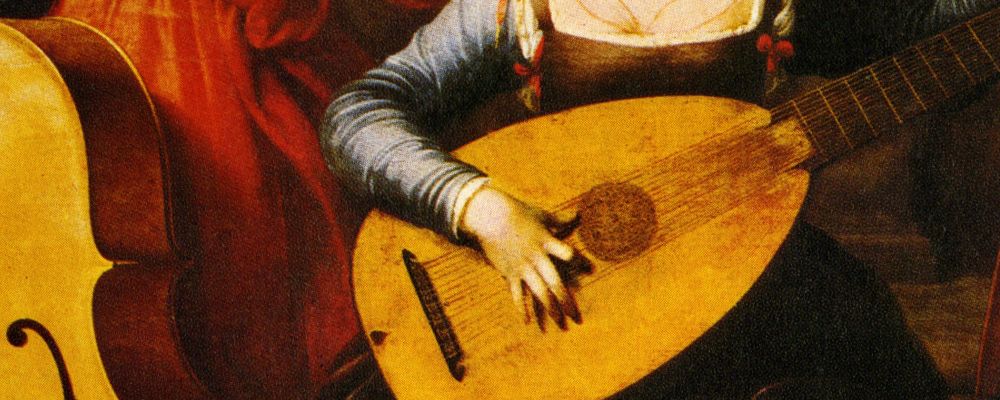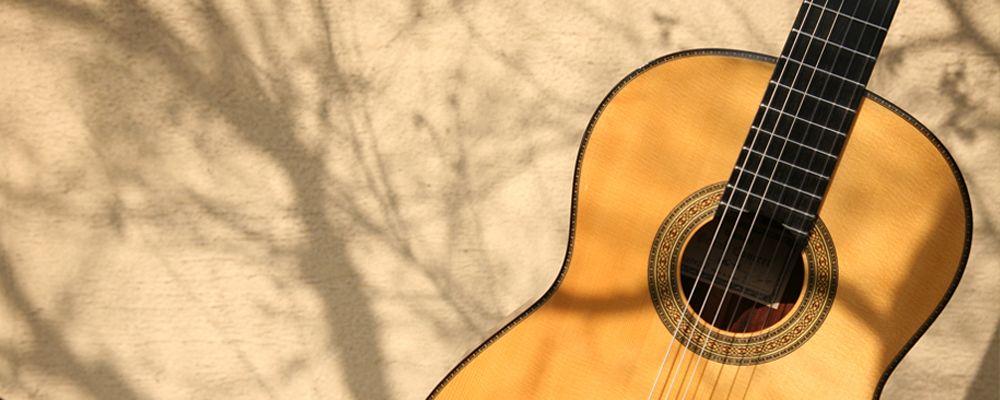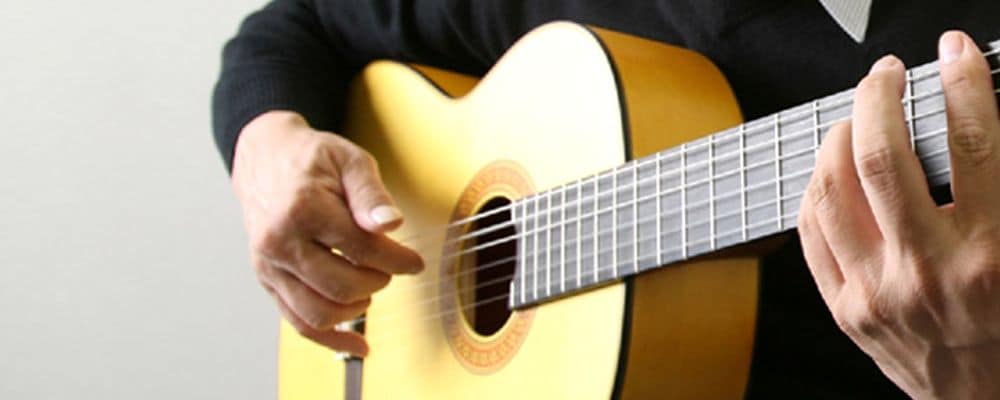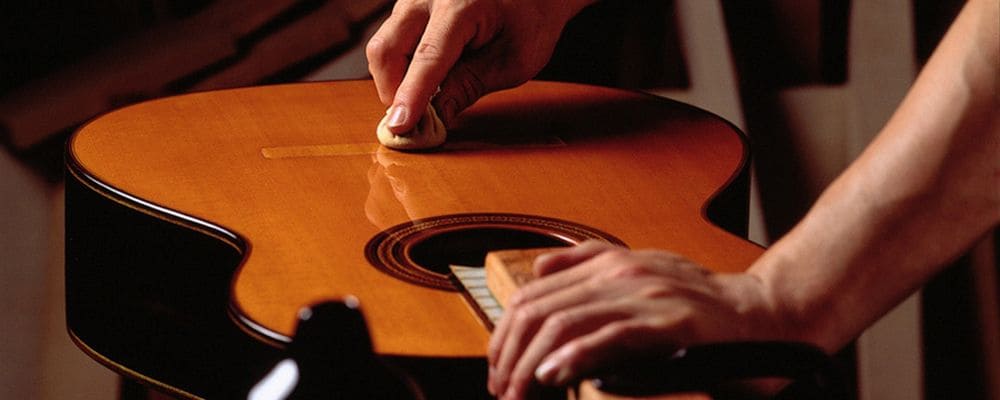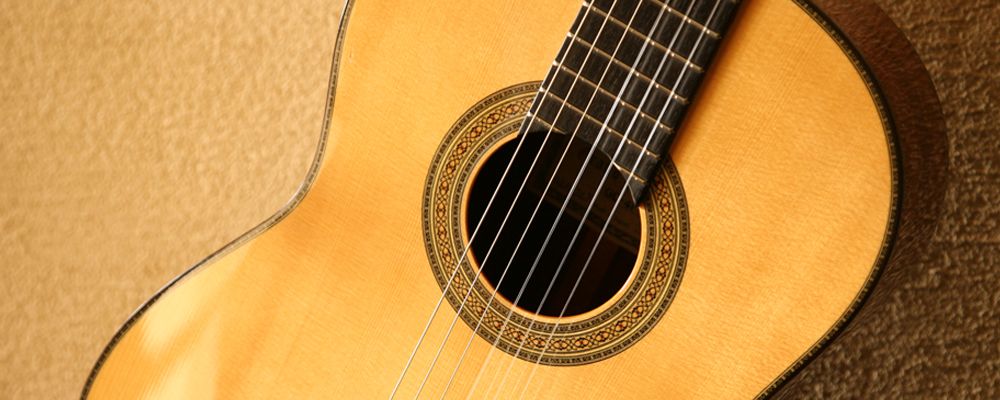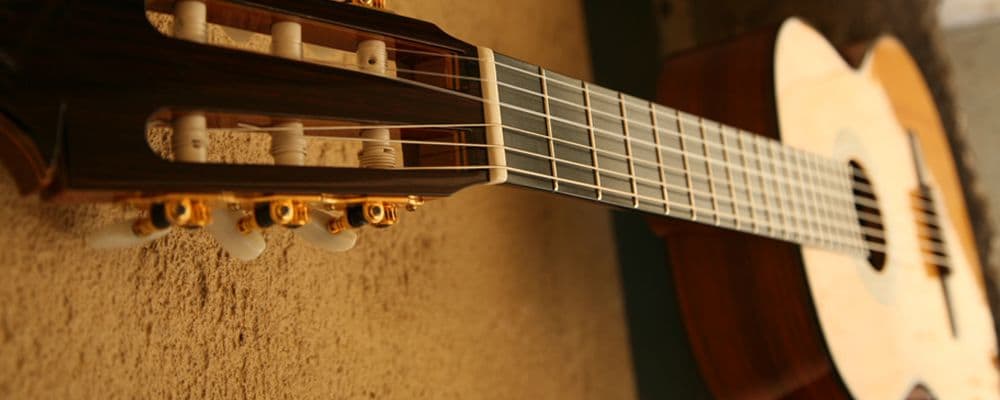Care and maintenance of the tuning keys
Care and Maintenance of a Classical Guitar
Tuning keys are smoother with instrument grease
The majority of classical guitar tuning keys are of an open type, with the gears exposed. The tuning keys will become stiff if dust, dirt or rust forms between these gears. If the gears are so dirty that they become jammed, the guitar will not be able to be tuned at all.
To prevent these types of problems, we suggest that you apply a small amount of grease to the gears. Grease for instruments is the best type to use. Apply some grease to the end of a toothpick, coat the area where the tuning key gears mesh, and rotate the tuning keys several times.
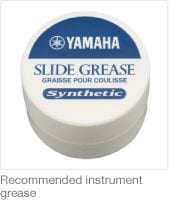
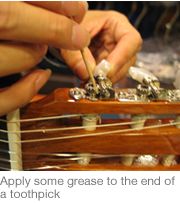
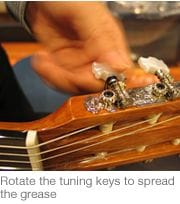
Some people spray rust remover on the tuning keys, but the oil contained within the spray can seep into the wood and present problems, so it is not recommended. Only the gears require oiling. The use of spray is permitted if the tuning keys are completely removed from the guitar itself so that the oil does not come into contact with the wood.
Tuning key parts can be replaced
Tuning key parts can be replaced

Classical guitars are designed so that the tuning key thumbscrews are perpendicular to the neck. Hitting or dropping the guitar may bend the tuning keys. The tuning keys must be replaced in this case. Luckily, the tuning keys can be replaced with a single screwdriver, so you can try and replace the keys by yourself.
One point to take note of is the size of the tuning keys. The majority of tuning keys manufactured for classical guitars are 35 mm type keys, however slightly older guitars may use 40 mm or 32 mm type keys. Only 35 mm type tuning keys are available today. Inquire at your nearest specialist guitar store if the tuning keys you are trying to replace on your own guitar use 40 mm or 32 mm type keys.

